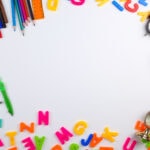Introduction
Kids like fun and hate anything repetitive and complex, which may be too challenging for their brains to understand. Fortunately, some online math tutoring platforms with educators see the need to make the math learning journey fun and enjoyable for kids. With the rise of AI making learning more personalized, it can also benefit kids to have some one-on-one time with kids.
Also, these platforms help ensure that kids of all ages have customized learning that aligns with their understanding. When making math enjoyable for kids, it’s not just about the curriculum for their grades; there’s also a need to patiently ensure that the activities are basic enough for kids to understand.
This article provides a perfect view of how to turn everyday activities into math learning opportunities so kids can always learn on the go.
7 Fun Everyday Math Activities
The language of math can be fun if you integrate it into daily living. So, here are seven enjoyable math activities to teach it so kids can embrace math more.
1) Running around the house
Often, kids run into coffee tables and even bump into people when they run around the house, so it’s evident that parents don’t like kids running in the house. But can you turn your kid’s vices into a math learning opportunity?
You may time a child’s 50-meter run using a stopwatch. They may keep track of the time in seconds and evaluate it against past runs to identify areas for development. The formula for speed is the product of the run’s distance and time. A child’s speed, for instance, would be: if they run 100 meters in 20 seconds, the speed will be 100/20 = 5 meters per second.
2) Sorting out scattered toys
Kids have a bad habit of throwing their toys everywhere with no care in the world. The thing is, they are kids /ad and cannot help themselves. Fortunately, like the other activity, you can turn your kid’s bad habit into an opportunity to learn math.
Let’s assume your youngster scatters items like crayons, plastic cups, building blocks, and balls; you can see the scattered toys. There are two ways to handle this: You can have your child sort the toys according to their colors or shapes.
The good thing about this learning is that even the youngest children may benefit from playing simple matching games to help them develop their sense of colors and shapes.
3) Doing basic arithmetic using board games
Playing board games is fun and engaging for kids, allowing them to work on their arithmetic abilities. Kids may learn and practice fundamental arithmetic skills, including addition, subtraction, multiplication, and division using counting.
When playing Monopoly, for example, kids use addition to determine how much money they have. They get into the habit of subtracting when they have debts.
With repeated playing of the board games, students indirectly perfect their understanding of addition and subtraction. Since the activity is enjoyable, the little ones will be enthusiastic about learning.
4) Math games for on your way to school
Mathematical drills may be fun on long car rides like going to school or visiting a family member.
Since geometry is a fundamental component of mathematics, parents may also inspire their children to observe the shapes of everyday items, such as the circular shape of wheels, the rectangular speed limit signs, diamond-shaped pedestrian crossing signs, circular manhole covers, octagonal stop signs, circular wheels, etc., that they see on the road.
This act will help kids understand the concept of shapes while reminding them that math is everywhere.
5) Cook and play
There are a lot of math problems in recipes that kids can tackle, as the kitchen is one area with lots of measurements. You can encourage kids to learn fractions when measuring so not only do they become great cooks, but they also have a better chance at math.
For example, to understand the language math, have the youngster measure half a cup of sugar if that’s what the recipe asks for. Working with real-world examples gives them a more practical understanding of fractions. Suppose you need to get half of a cup of sugar; show the kids how to divide the cup into two equal parts so they can get ½.
Kids may strengthen their math abilities while learning about time and the value of accurate measures by timing the cooking process. Setting a baking timer and making educated guesses about when food will be served are two activities that may help kids hone their sense of time and enhance their predictive skills.
6) Prepare a budget for grocery shopping
Kids may get practical experience in basic arithmetic operations and money sense by preparing a budget for grocery shopping. The first step is to calculate how much money they will need. Say you want to spend $100 on food for the week. With the kids, determine what must be purchased and how much money will be required.
The next step is to attach rough prices to everything on the list. For instance, vegetables are $12, $5 for milk, $15 for eggs, etc. This additional exercise strengthens their math abilities. If it goes over budget, have them find out what they can cut down on or remove to keep it under control.
Making a grocery list and sticking to it teaches kids important life lessons about budgeting, saving, and managing money. The language of math becomes more exciting and relevant when students see its real-world applications in this interactive activity.
7) Learn a new language
Learning a new language is a beneficial mental exercise that can help kids with problem-solving abilities like memorization and attention to detail. Math is a language that means the same everywhere and benefits kids.
Thinking is essential for mathematical competence, and acquiring a new language helps. Instead of going to a physical school, kids can quickly learn a new language from the comfort of their homes in an engaging manner. Also, to make the lessons more enjoyable, start by helping the kids learn to say “Yes” in Swedish.
Is Math a Universal Language?
Teaching math to multilingual students is easy if you know how to go about it. For instance, when you say zehn to a German or dix to a French, they automatically know you mean “10.” Hence, math as a language is the same everywhere as it still signifies the same number of units.
Math and language become more of a pleasure and less of a burden when integrated into everyday activities.









